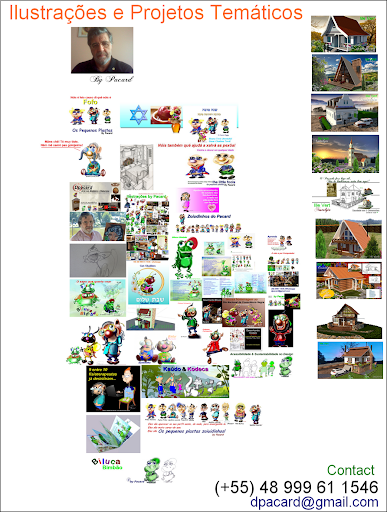I can only talk about Brazil and its market, since my professional borders have not advanced beyond them, even though, over fifty years dedicated almost entirely to the creation of furniture and interiors (some gardens have also found their way onto my drawing boards from time to time). back when), I took a few strolls, with this purpose, around the old world, but only just being nosy, curious.
I have always had integrity in my creative career, and I have always understood the uncertainty of the creative state of things, which did not always meet the expectations of the manufacturers, even though many of them did not know what they wanted when hiring, but after it was presented, they knew that it was not going to happen. that was what was shown, and then, patiently, I went back to the drawing board, until the fluids balanced, and the collection was materialized.
It is also true that there was a time when I believed that it was enough to be creative to please the market, until, with great difficulty, I also learned that creativity is just one part of the job, and that it only fulfills its purpose when added to experience. and above all, the clarity of communication between the manufacturer, the market, and between them, the Designer, who, before being good at drawing, should (and still must) have objective training to understand both languages, and obtain chiasmus, the middle of the "X", that point of balance between one and the other. It should easily understand the language of the market, and it should understand the language of the "Shop Floor", because in the good relationship between the creator of the project and the executor of production, there should be full harmony. And that was how I worked, and I still work today.
But, as with everything, there are pitfalls, and one of the pitfalls is the manufacturer's (justified) insecurity in launching a product that is too innovative, and stalling sales, having to return to the production of "Commodities", those products in common use across the world. all competitors, where price is disputed rather than model, wasting time, enthusiasm, and money, and even credibility, due to lack of market vision, in launching products that do not rotate in stores.
The big issue is the market, and here we talk about the Brazilian market, which interests us. The first reading is the fallacy that "Brazilians do not understand and do not know how to value design", which limits the possibility of innovation, and sends manufacturers to the old and unpleasant practice of resorting to copies, with the possibility of lowering costs for become more competitive. And they do, for a limited period of time, but enough to give them pause to think about the next step. The problem is that the next step, the one in which they will be able, with more resources, to develop their own products, with original design, creating "brands", and here begins the bifurcation, as this will never happen, since the convenience of selling of low-value copies, has already completely dominated creative ambition, and this businessman will hardly get used to the presence of creative professionals, who have always been seen as inaccessible, eccentric, arrogant, and vain with their creations. And the door definitely closes, due to this condition.
There is, however, a window of possibilities, where the manufacturer, retailer, and Designer will find the aforementioned "chiasmus": The creation of a new niche with its own brand, different from the company's conventional brand, detaching the new creative brand from the " beans and rice" traditional. A new line, a new brand, a new sales team, and a new market niche, in other stores, other centers, and an independent production, marketing, and commercial management structure. Only in this way, the chances of success, slower, with different timing of results, can be achieved. It's in the Bible: You don't put new wine in old wineskins. They will not resist, and the wine and wineskins will be lost, as well as the most important thing: The credibility of the manufacturer, who stops being an entrepreneur and becomes an adventurer. And not even sports professionals can be called adventurers, because for each podium, there are many years and hours, sweat, and training and strategy, for each victory achieved.
And with the following question: Is the model mine, because I developed it, or ordered it and paid for it from a serious professional, or won it, or was I granted permission to reproduce it? No? So I went on the internet and copied it, simply because it was there and "anyone can copy it, without responding, at least morally due to lack of ethics?" None of that? So, the name is different. If I find a burnt matchstick inside someone's land, and I take it away without asking permission from the owner of the house, what's the name of that? What if instead of a burnt toothpick, a valuable ring, found in the same place, becomes theft? Of course yes, they both are. The value doesn't matter, but knowing that what doesn't belong to me, I have no right to appropriate. That simple. A thief is a thief!
Believe me, I'm old. I've seen shit...!
Pacard - Designer, Writer










